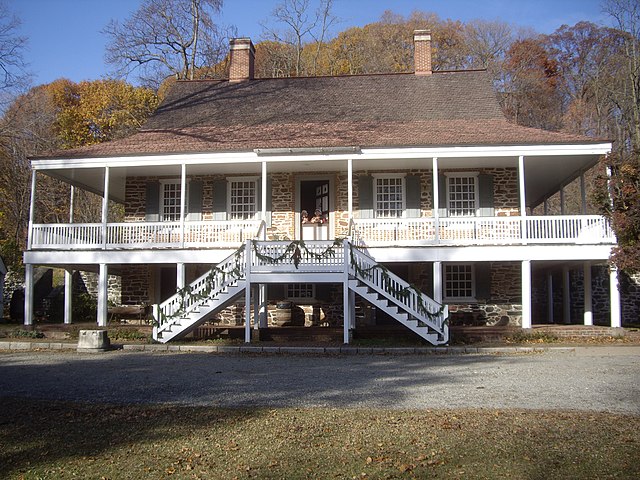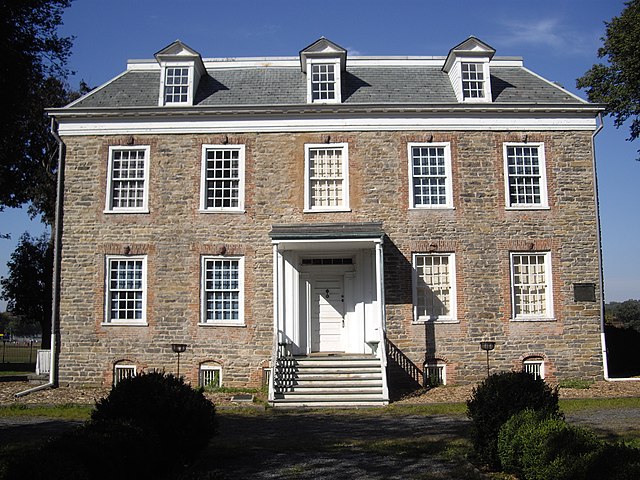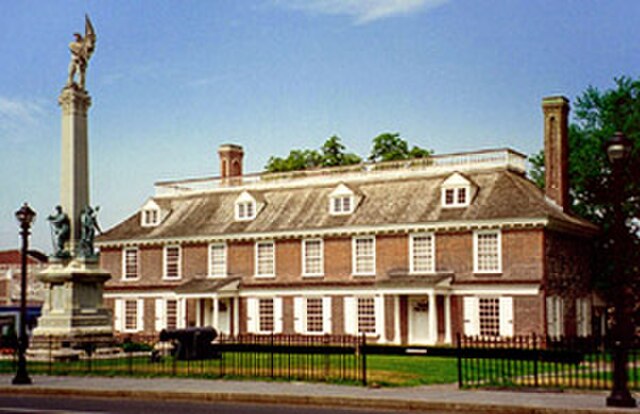The Van Cortlandt family was an influential political dynasty from the seventeenth-century Dutch origins of New York through its period as an English colony, then after it became a state, and into the nineteenth century. It rose to great prominence with the award of a
Royal Charter to Van Cortlandt Manor, an 86,000-acre (35,000 ha) tract in today's Westchester County sprawling from the Hudson River to the Connecticut state line granted as a Patent to Stephanus Van Cortlandt in 1697 by King William III.
Van Cortlandt family
Van Cortlandt House Museum, in the Bronx, New York City
Mahogany table brought from Holland in 1668 by Olof Stevense Van Cortlandt
Frederick Philipse, first Lord of the Manor of Philipseborough and patriarch of the Philipse family, was a Dutch immigrant to North America of Bohemian heritage. A merchant, he arrived in America as early as 1653. In 1662, he married Margaret Hardenbrook de Vries, a wealthy and driven widow. Together, and variously in league with slavers, pirates, and other undesirables alongside the prominent and respectable, the couple amassed a fortune.
Frederick Philipse
Philipse Manor Hall, the Lower Mills manor house
Philipsburg Manor House at the Upper Mills
The Hudson Highlands are among the scenic highlights of the Philipse Patent







